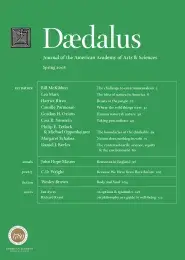The contested earth: science, equity & the environment
Since World War II, an army of advocates and agitators, some of them scientists, have shaped our attitudes toward nature. Among the best known is Rachel Carson, whose Silent Spring, first published in 1962, warned that chemical weed killers and insecticides were despoiling the environment and threatening human health. Carson called such agents “elixirs of death,” explaining, “For the first time in the history of the world, every human being is now subjected to contact with dangerous chemicals, from the moment of conception until death.”1
Carson’s eloquent alarm derived in part from her unalloyed devotion to nature, but her environmentalism was also a product of her career in the U.S. Fish and Wildlife Service from 1936 to 1952. Explaining a series of twelve booklets that she produced for the agency under the rubric “Conservation in Action,” she deplored the accelerating destruction of nature in the Western Hemisphere and declared, “Wildlife, water, forests, grasslands–all are parts of man’s essential environment; the conservation and effective use of one is impossible except as the others also are conserved.”2 In Silent Spring Carson noted that people had long liked to believe “that much of Nature was forever beyond the tampering reach of man . . . that, however the physical environment might mold Life, that Life could never assume the power to change drastically –or even destroy–the physical world.”3 It now seemed manifestly evident to her that the foundations of this belief were dissolving.
Carson overstated her case by warning against the destruction of the physical world. That world would remain, if in modified form, no matter what human beings might do. But in calling attention to how human beings were altering the natural world to the mutual disadvantage of both, she placed herself in a historical line of good company. Prominent among them was the corps of agitators for nature who emerged in the nineteenth century and that included Henry Thoreau, John Muir, and George Perkins Marsh. Thoreau and Muir advanced a kind of antimodernism, celebrating nature as a haven from the technological metropolis. Marsh embraced scientific knowledge and methods as a means of using nature without irrevocably destroying it. Together, they expressed an ambivalence toward the scientific and technological exploitation of the Earth that has marked attitudes toward nature, including Carson’s, since the Industrial Revolution.
. . .
